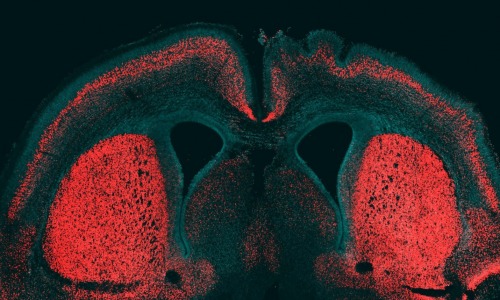
Gene that makes human brain unique
A strand of DNA that lies at the heart of what makes humans unique in the animal kingdom has been identified by researchers in Germany.
Scientists in Dresden found a gene that drives the expansion of the human brain and helps to make it the most complex structure in the universe.
Researchers believe the gene plays a pivotal role in human cognition by ramping up dramatically the number of neurons in the neocortex, a brain region that is central to reasoning, language and sensory perception.
The gene is found in modern humans, but was also carried by neanderthals, who had brains at least as large as ours, and the mysterious Denisovans, a group of human ancestors known only from a few bone fragments in Siberia.
Wieland Huttner, director of the Max Planck Institute of Molecular Cell Biology and Genetics in Dresden, who led the research, said the finding came from 25 years of work on the problem. “Our ultimate goal has always been to identify the changes in the genome that were responsible for us humans having larger brains than other primates,” he said.
The human brain has almost tripled in size over the past 7 million years into a 1,300cc organ containing 100bn neurons that consume a whopping fifth of our energy. The most rapid growth occurred in the past 2 million years. Homo erectus walked the Earth 1.8 million years ago with a brain size half that of a modern human’s.
“What we now have is a gene that is characteristic of a 1.3 litre to 1.4 litre brain, and that makes it very exciting,” Huttner said.
Tests on mouse embryos confirmed that the gene can have a profound impact on brain development. Embryos injected with the gene grew larger brain regions and some developed the crinkled brain surface that humans have. The folds allow more brain tissue to fit into the same sized skull.
Huttner’s group is now keen to breed mice that carry the gene into adulthood to see how their brains develop, and crucially to see whether any changes boost their intelligence, memory and learning skills.
“Will they learn better, or have better memories? That’s hard to say. But we should know that later this year,” Huttner told the Guardian. “We saw cortical folding in half of the mice. So the gene is sufficient to do that, but it won’t necessarily do it every time.” The scientists are investigating why the gene does not have the same effects every time.
The gene arose on the human lineage some time after our ancient ancestors and those of chimps split from the same evolutionary path more than 5 million years ago. Known as ARHGAP11B, the gene is a modified version of a far more common DNA strand that is found in organisms from simple yeast to mice.
Marta Florio, a neuroscientist at the Dresden lab, found that the gene was highly active in human brain stem cells that make neurons in the neocortex. Instead of the stem cells maturing and dividing into only two neurons, as happens in some animals, the gene makes the cells multiply and produce far more brain cells.
Florio, the first author of a report on the work in the journal Science, discovered a total of 56 genes that affect stem cells in the brains of primates, about a quarter of which are unique to humans. Some have not been identified before and could have their own major effects on human brain development.
“What is unique about humans is not going to come down to one gene only,” Florio said. “Cognition is a complex thing. We don’t think a single gene makes us smarter than other animals. What we can say is that this is probably a key part of what makes us human.”
But she does not think her lab will make super-intelligent mice any time soon. The ARHGAP11B gene seems to produce more brain cells in the neocortex, but that may not be enough to boost an animal’s intelligence on its own. More likely, Florio says, the brain needs other genes to make those neurons form functional networks in the brain. “You’d predict the mice would have more computational power, but the neurons have to form a network, and I’m sceptical that with one gene you will get that. It’s an exciting possibility, but we should be cautious about that happening.”
Image: Mouse cerebral cortex. Mouse embryos injected with the gene identified by scientist as key to human cognitive faculties grew larger brain regions and some developed the crinkled brain surface that humans have. Credit: Marta Florio and Wieland B. Huttner, Max Planck Institute of Molecular Cell Biology and Genetics
Source